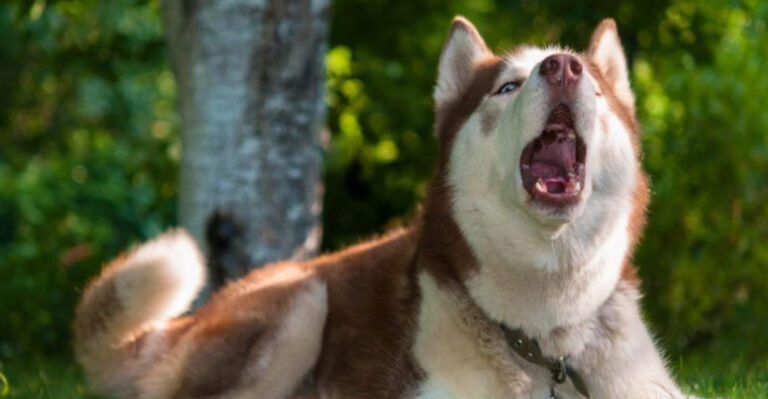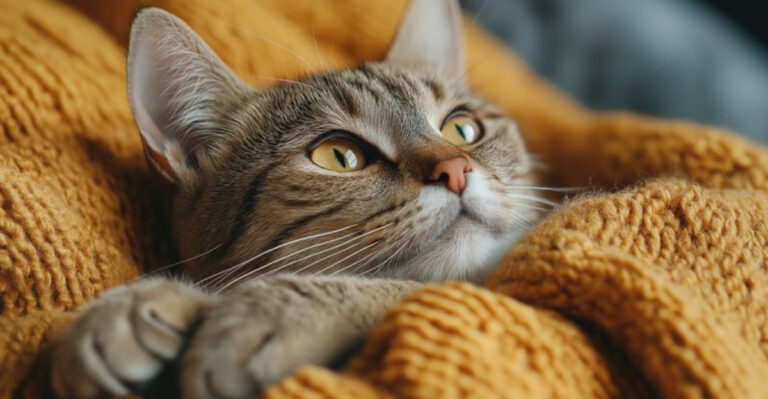13 Horse Breeds That Are Only For Experienced Owners
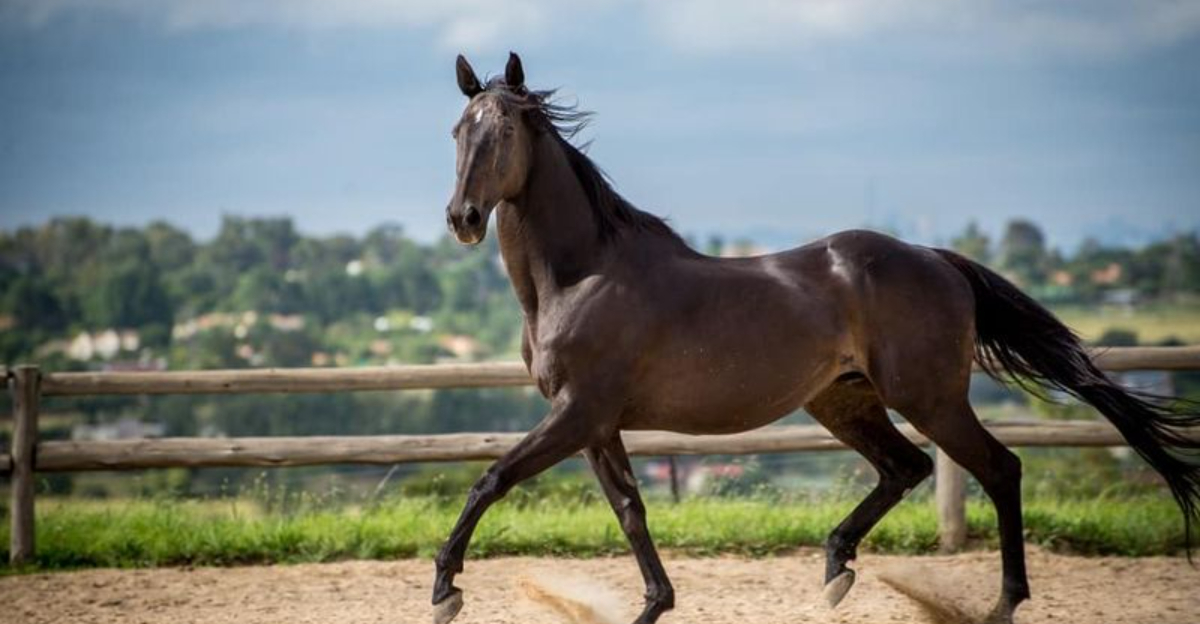
Owning a horse is a dream for many, but not all equine companions are created equal. Some breeds pack more spirit, power, and complexity than others, requiring handlers who bring years of experience to the barn.
Whether it’s their size, temperament, or specialized needs, these magnificent animals demand owners who understand the finer points of horsemanship.
If you’re considering adding one of these breeds to your stable, make sure you’re ready for the challenge they represent.
1. Lightning In A Bottle: The Arabian
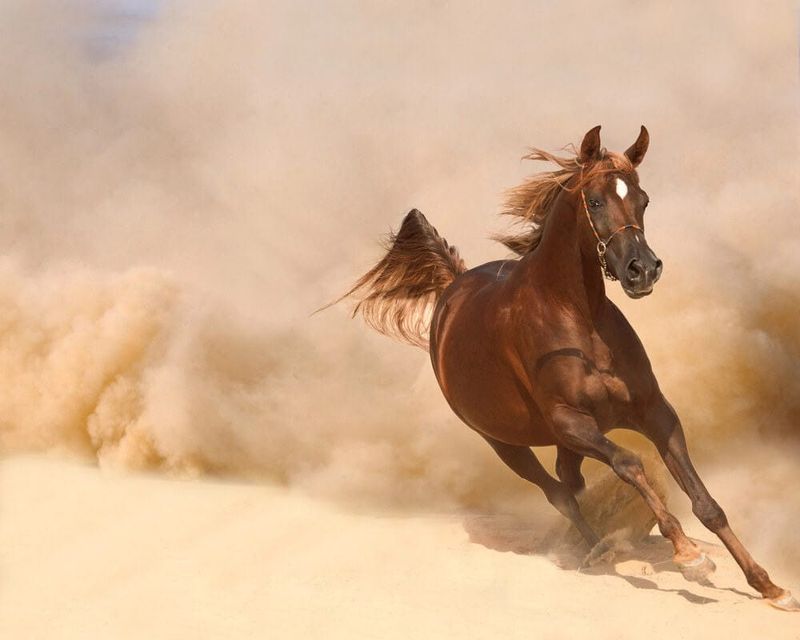
Fire runs through the veins of these desert-born beauties. Arabians possess incredible intelligence that, when paired with their heightened sensitivity, can quickly overwhelm novice handlers. Their reactions are lightning-fast, and their memories are long.
Centuries of breeding for survival in harsh environments has created a horse that’s alert to every movement and sound. They form deep bonds with their owners but can become willful and reactive when misunderstood.
Their energy seems endless, requiring consistent work and clear boundaries. An experienced owner knows how to channel this intensity into productive partnership rather than letting it spiral into anxious behavior.
2. The Mighty Andalusian: Royal Yet Demanding
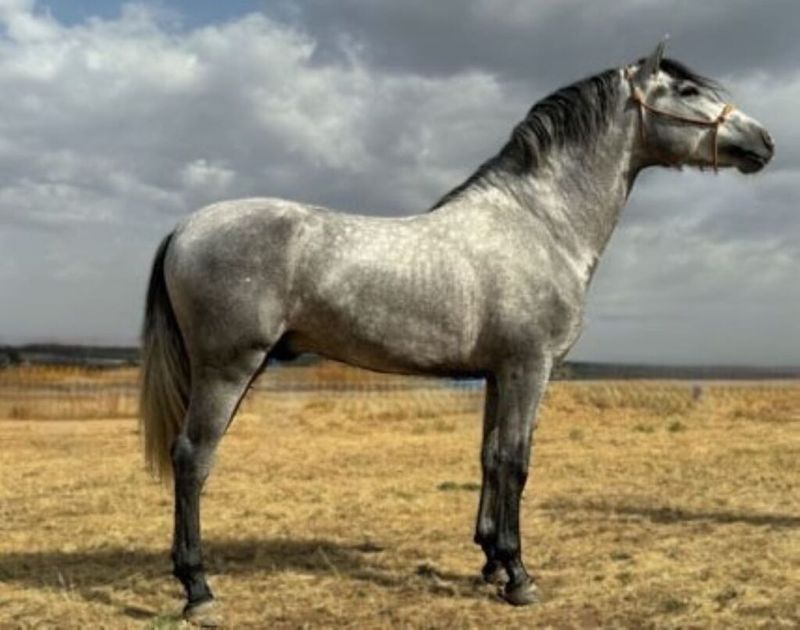
Once the mount of kings, these Spanish masterpieces demand a rider worthy of their noble heritage. Their powerful build and natural collection make them stunning to watch but challenging to handle for those without classical training experience.
Andalusians possess a unique combination of sensitivity and strength that can quickly overwhelm a novice. Their intelligence means they learn quickly – both good and bad habits.
Training these horses requires finesse, not force. They respond beautifully to skilled riders who understand subtle cues but can become frustrated and resistant when communication breaks down. Their proud nature requires an equally confident handler.
3. Wild At Heart: The Akhal-Teke
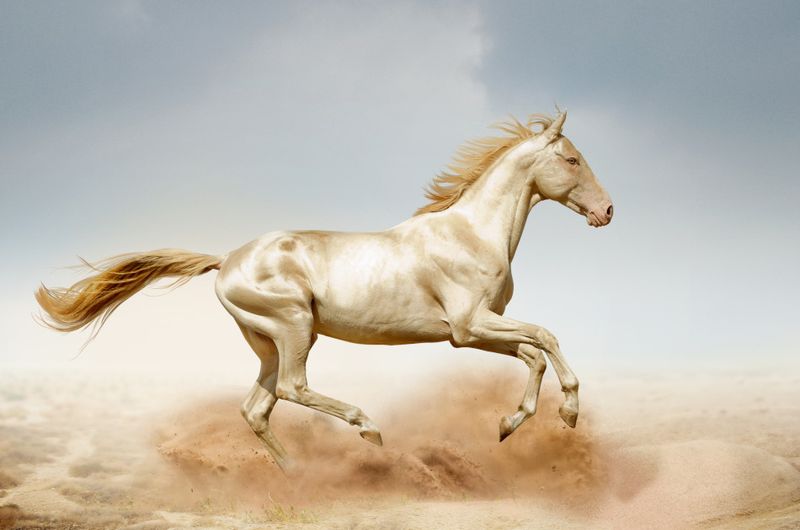
Glistening like metal in sunlight, these rare Turkmenistan treasures aren’t just striking – they’re intensely challenging. Developed through harsh desert conditions and selective breeding, Akhal-Tekes form one-person bonds that border on obsessive.
Their sensitivity reaches levels most horsemen never encounter. They read intentions before you’ve even formed them, responding to thoughts rather than physical cues. This breed carries ancient desert survival instincts that make them hyperaware and sometimes reactive.
Handling an Akhal-Teke requires psychological finesse rather than traditional training methods. Their legendary endurance comes with equally legendary opinions about how things should be done – and they won’t hesitate to let you know.
4. The Unbridled Marwari: Curved Ears, Curved Learning
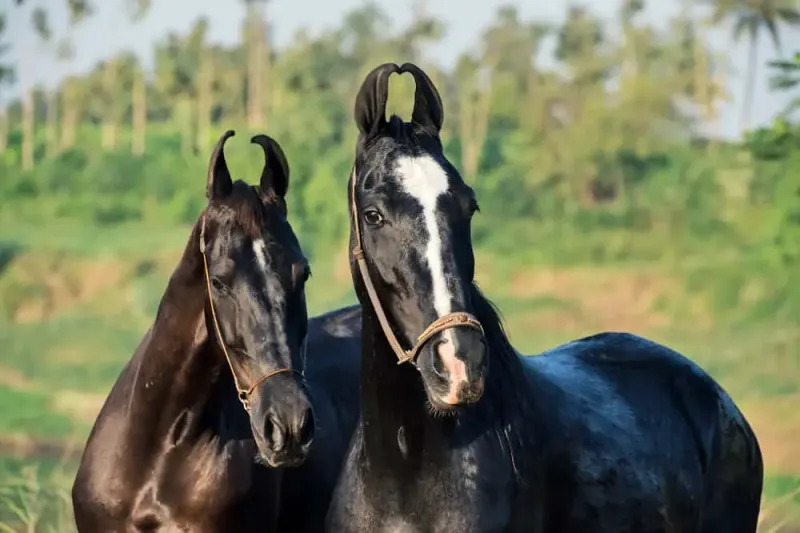
Recognized instantly by their inward-curving ears, these Indian war horses carry centuries of battlefield courage in their DNA. Traditional Marwari training methods differ dramatically from Western approaches, creating a unique challenge for even experienced horsemen unfamiliar with their heritage.
Hot-blooded and highly reactive, they possess natural gaits unlike any other breed. Their alert nature – once vital for survival in combat – can translate to spookiness in everyday situations.
Marwaris form intense bonds with their handlers but test boundaries constantly. Their independent thinking served them well historically but requires an owner who understands the difference between partnership and dominance. These horses need consistency above all else.
5. The Explosive Thoroughbred: Built For Speed, Not Beginners
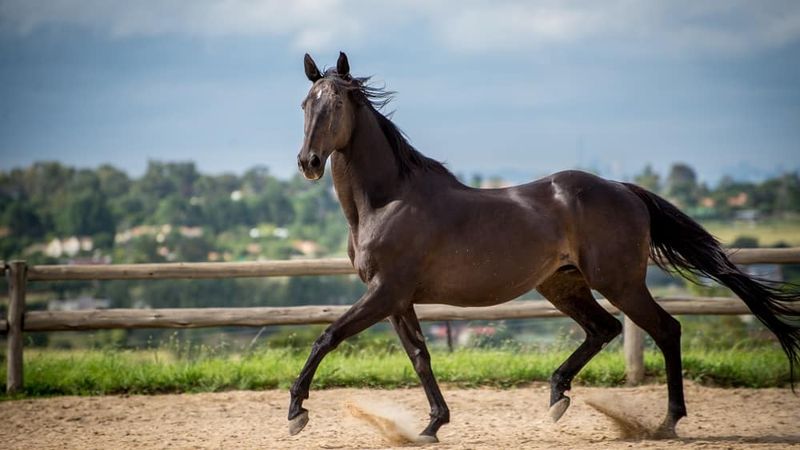
Beneath the glossy coat of these racetrack stars lies a powder keg of energy waiting to ignite. Bred for centuries to run with blazing speed and competitive drive, Thoroughbreds bring athletic brilliance paired with hair-trigger reactions.
Their sensitive nature makes them responsive to skilled riders but overwhelming for novices. Off-track Thoroughbreds face particular challenges transitioning to recreational riding, carrying ingrained habits from their racing days.
These horses process information rapidly and become bored easily. An experienced owner understands how to provide the mental stimulation and consistent work these athletes require. Without proper handling, their natural intensity can quickly escalate into anxiety or dangerous behaviors.
6. The Majestic Friesian: Beauty With Brawn
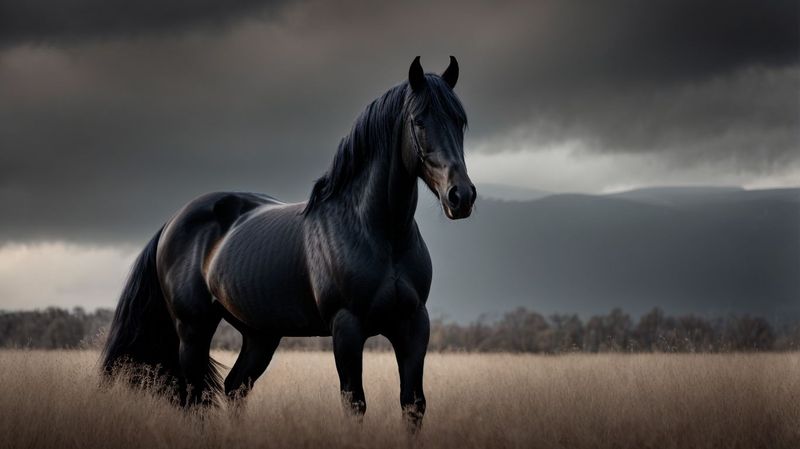
Looking like they stepped from a fairy tale, these black beauties combine striking looks with surprising power that demands experienced handling. Their massive size alone presents challenges – a Friesian can easily weigh over 1,300 pounds, with strength to match.
Despite their imposing presence, they’re sensitive souls who take criticism personally. Their eagerness to please can make them anxious under inconsistent guidance. Those flowing feathers and dramatic movement come with specialized care requirements many novices underestimate.
Friesians develop deep attachments to their handlers, requiring owners who understand the responsibility of such a bond. Their natural collection makes them appear easy to ride, but controlling that power demands advanced skills and body awareness.
7. The Enigmatic Saddlebred: High-Stepping Challenges
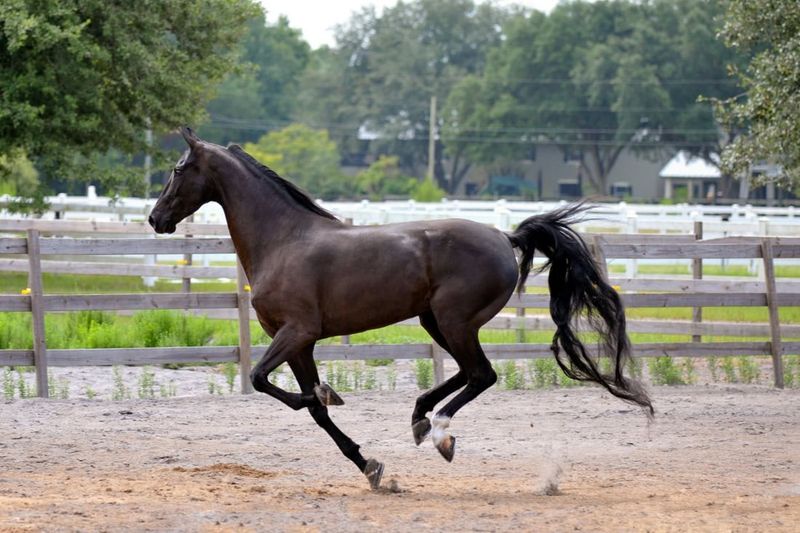
Watching a Saddlebred float across the show ring masks the incredible skill required to handle these high-energy performers. Their exaggerated movement and animated nature – prized in the show ring – translate to heightened sensitivity in everyday handling.
Years of selective breeding for flash and presence have created horses with reactions quicker than most handlers can anticipate. Their intelligence means they learn rapidly but also question everything.
Saddlebreds require consistent work to channel their natural animation productively. Many develop strong opinions about their routines and environment. An experienced owner recognizes when to direct this energy and when to accommodate their quirks, creating a balanced partnership rather than constant power struggles.
8. The Formidable Lusitano: Ancient Warrior Spirit
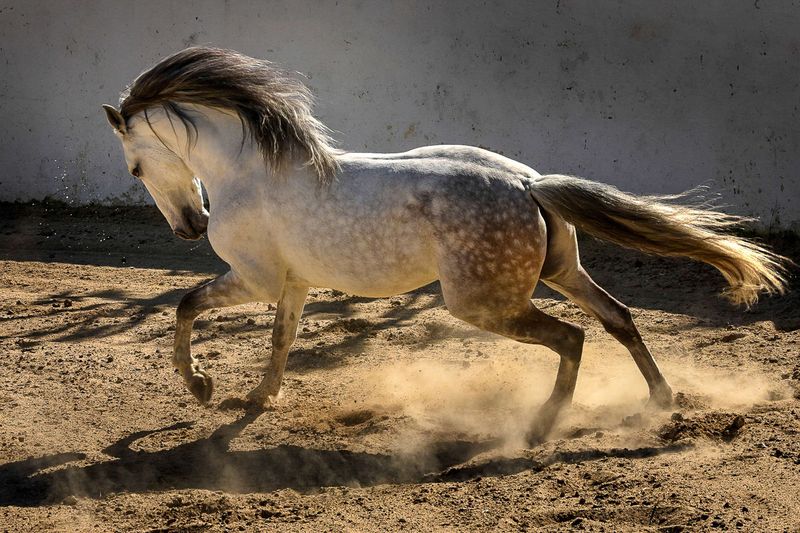
Carrying the legacy of ancient war horses, these Portuguese powerhouses combine explosive athleticism with heightened sensitivity. Their quick reactions – once vital for evading bulls in traditional work – can catch unprepared handlers off guard with lightning-fast responses.
Lusitanos possess natural collection and agility that makes advanced movements seem effortless. This same natural ability means they can perform unintended maneuvers just as easily when startled. Their intelligence demands mental stimulation beyond physical exercise.
Training requires consistency and fairness rather than dominance. They remember every interaction, forming opinions about handling practices that can last a lifetime. An experienced owner appreciates their historical context while providing clear leadership these proud horses respect.
9. The Powerful Warmblood: Athletic Giants
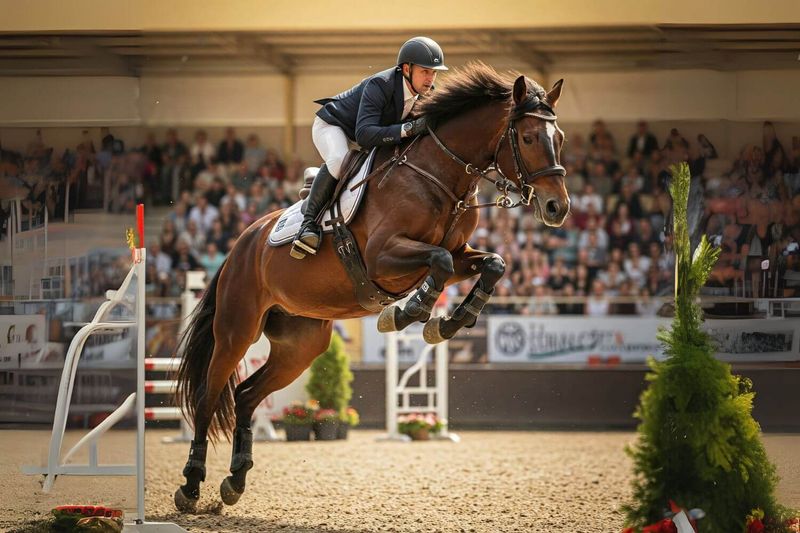
Imagine trying to direct a 1,200-pound athlete with opinions of its own. Modern warmbloods bring Olympic-level power and movement that can quickly overwhelm those without advanced riding skills. Their massive stride and natural suspension create riding challenges even before addressing their complex personalities.
These sport horses process information differently than hot-blooded breeds, often taking time to consider requests before responding. This thoughtfulness can be mistaken for stubbornness by inexperienced handlers.
Warmbloods require systematic training approaches and consistent expectations. Their size means small handling errors can have significant consequences. An experienced owner understands how to develop these athletes gradually, respecting both their physical and mental development timelines rather than pushing for quick results.
10. The Spirited Barb: Desert-Tough Determination
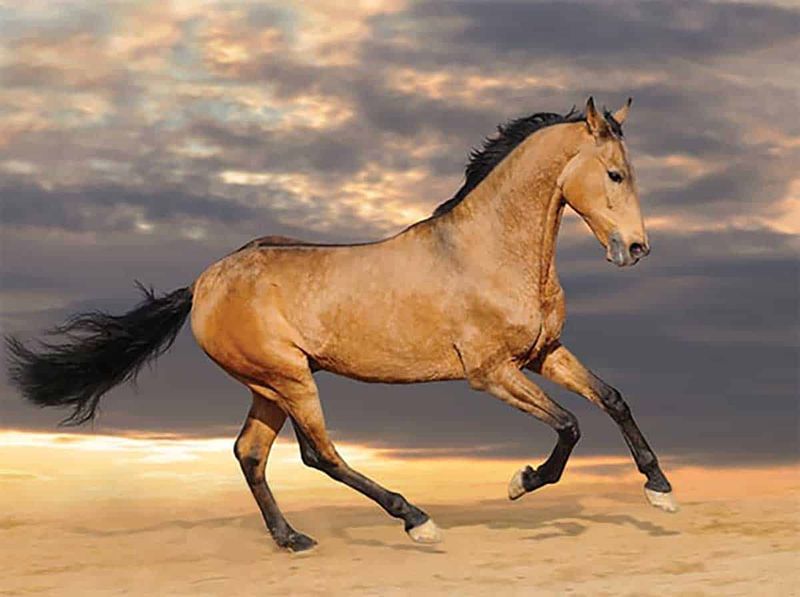
Underneath the unassuming exterior of these North African horses lies a spirit forged through centuries of desert survival. Barbs possess incredible hardiness paired with independent thinking that challenges even seasoned horsemen.
Their natural suspicion of strangers served them well historically but requires patient handling in modern settings. Quick to form opinions and slow to change them, Barbs test boundaries consistently. Their legendary endurance means they rarely tire before their handlers.
Training approaches that work for other breeds often fall flat with these independent thinkers. They form strong bonds with those who earn their respect but remain aloof with handlers who rely on dominance. An experienced owner appreciates their history while providing the clear leadership these horses seek.
11. The Unpredictable Mustang: Wild Origins, Wild Hearts
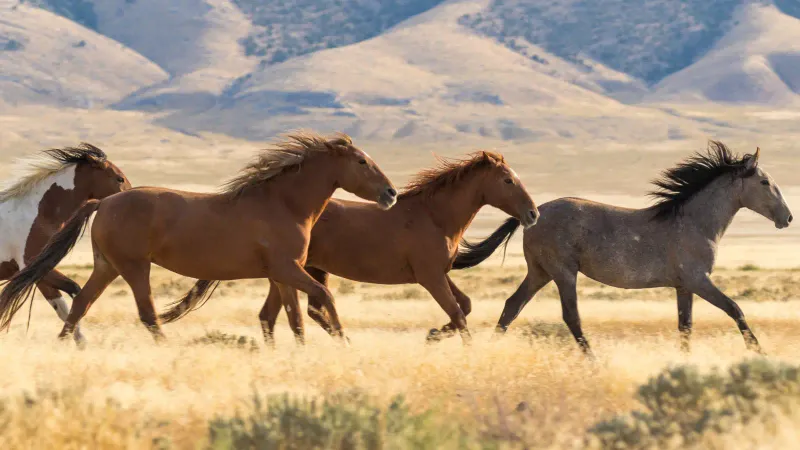
Freedom runs deep in the veins of these living legends. Mustangs carry generations of survival instincts that make them uniquely challenging, especially those gathered from the wild as adults. Their independent nature served them well on the range but requires specialized handling in domestic settings.
Trust comes slowly and must be earned through consistent, fair interaction. Their highly developed fight-or-flight response can trigger seemingly without warning to inexperienced eyes.
Mustangs process training differently than purpose-bred domestic horses, questioning everything through the lens of survival. An experienced owner understands this perspective, working with rather than against their natural instincts. When that partnership forms, their legendary loyalty and surefootedness make them exceptional partners.
12. The Commanding Lipizzaner: Born Performers With Opinions
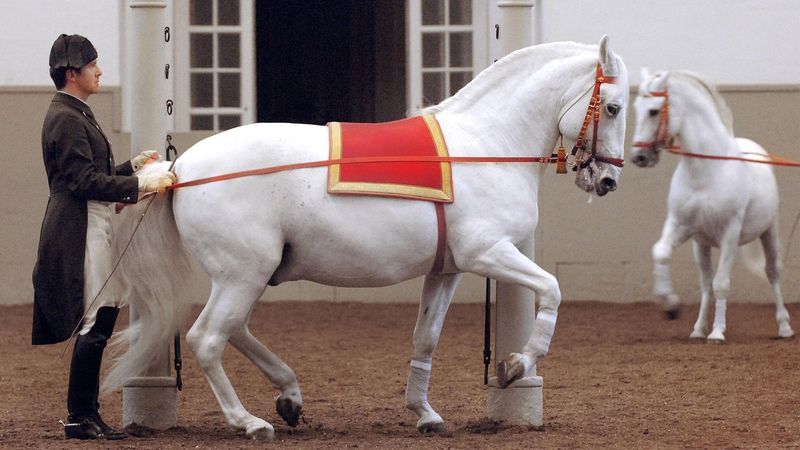
Famous for their breathtaking aerial movements, these living pieces of European history demand handlers with equal parts finesse and firmness. Their development is uniquely slow – many don’t reach full maturity until age 7-10, requiring patience beyond what most owners expect.
Lipizzaners possess extraordinary intelligence paired with strong opinions about how things should be done. Their sensitivity can border on telepathic, responding to thoughts rather than physical cues. Traditional training methods developed over centuries work best with these specialized athletes.
Most challenging is their tendency to test boundaries constantly, requiring consistent handling that never varies. An experienced owner appreciates their historical context while providing the clear leadership these proud horses respect rather than trying to shortcut centuries of specialized breeding.
13. The Complex Paso Fino: Smooth Gaits, Challenging Minds
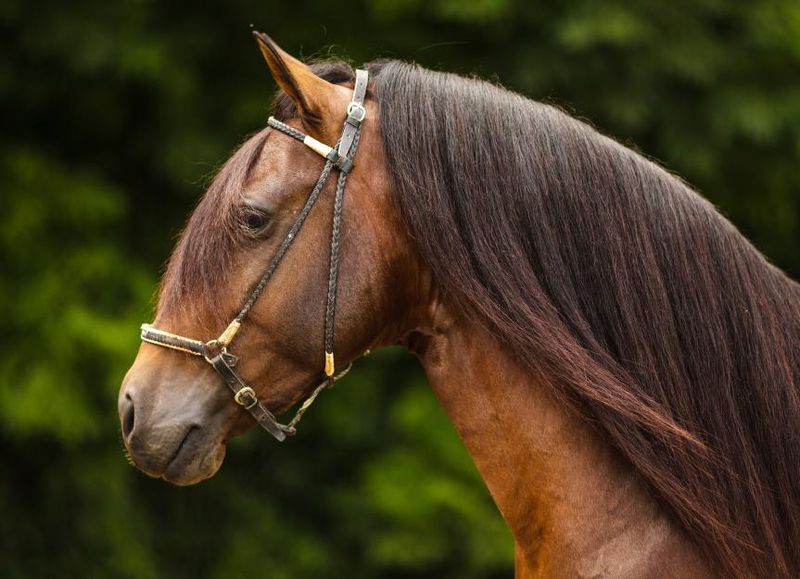
Famous for their incredibly smooth four-beat gait, these Latin American treasures hide complex personalities behind their flashy movements. Their natural gaiting ability creates unique training challenges that confuse handlers accustomed to traditional breeds.
Pasos carry strong opinions about everything from handling to tack preferences. Their sensitivity can manifest as stubbornness when misunderstood. The same genetics that create their smooth gait also influence their spirited temperament.
Training requires specialized knowledge that respects rather than fights their natural movement. They form intense bonds with knowledgeable handlers but can become resistant when communication breaks down. An experienced owner recognizes the connection between their physical structure and behavioral tendencies, working within their natural design rather than against it.


